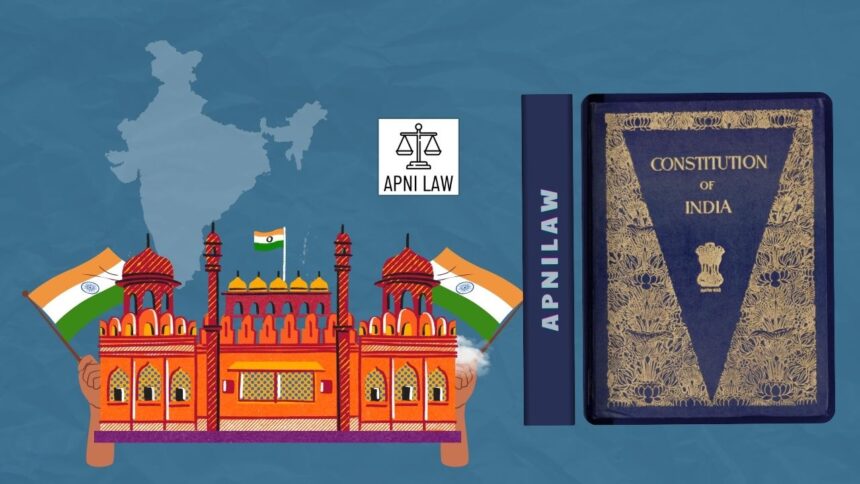Introduction
The Berubari Case of 1960 is a landmark case in Indian constitutional law. It was one of the first times that the Supreme Court had been called on to interpret the meaning of the Preamble to the Indian Constitution. The case did not arise out of an idealistic controversy but from a pragmatic controversy regarding the exchange of land between Pakistan and India. It raised a fundamental question that dominated decades of constitutional understanding: Is the Preamble no more than an expression of intention or does it carry enforceable legal significance, and if so, can it be amended? The court’s decision in this case was given to the Preamble a limited construction, but subsequent constitutional change gave it a meaning far wider. By taking a look at the Berubari Case, we can see how constitutional interpretation changed and how the Preamble’s role became stronger to determine the spirit of India’s democracy.
Background of the Berubari Dispute
Berubari Union was a small territory in West Bengal that turned into a dispute after India gained independence. In 1958, Indian Prime Minister Jawaharlal Nehru and Pakistani Prime Minister Feroze Khan Noon reached a resolution to divide Berubari and swap some enclaves. Although the agreement was important diplomatically, it presented a constitutional issue at home. Could the Indian government transfer land to another state without revising the Constitution?
President Rajendra Prasad realised the delicacy of the issue and referred the case to the Supreme Court under Article 143, which allows him to seek the Court’s advisory opinion. The central problem was whether the Preamble itself conferred jurisdiction for such an action or constitutional amendment was necessary.
Supreme Court’s View in the Berubari Case
In its 1960 advisory opinion, the Supreme Court’s vision of the Preamble was tight-fitting. The Preamble, it held, is not a substantive component of the Constitution. The Court characterized it as a directive preamble, helpful in the interpretation of the goals of the Constitution but not a source of power or enforceable rights. The Court held that the Preamble could not justify transferring land or legitimizing any government action. If India wanted to give up any part of its territory, it had to amend the Constitution under Article 368. It established that ideals that find expression in the Preamble cannot be a substitute for concrete provisions in the Constitution.
Can the Preamble Be Amended?
The Berubari Case ruling implied indirectly that the Preamble could not be modified because it was not given the status of part of the Constitution. The Preamble was given symbolic importance but no binding legal role under this view. The position, however, did not remain unchanged. In the case of Kesavananda Bharati in 1973, the Supreme Court re-opened the question and declared that the Preamble is part of the Constitution. The Court explained that Article 368 can amend it, but only on the condition that the amendment is not to the basic structure of the Constitution. This doctrine conferred on the Preamble legal status as well as protection. The 42nd Constitutional Amendment of 1976 demonstrated this on the ground by Parliament amending the Preamble by the addition of words Socialist, Secular, and Integrity. So although Berubari Case had settled the fact that Preamble cannot be amended, subsequent judicial development amply made it clear that Preamble can be amended but not without restrictions.
Significance of the Berubari Case
Though the Supreme Court’s view of Berubari was subsequently overruled, the case is important in constitutional history. It was the first important reading of the Preamble and revealed the conservative bent of the judiciary at that time. The ruling stressed that amendments like giving away territory could not rest on broadd ideals. They had to strictly follow the constitutional amendment process. This principle maintained the sanctity of Article 368 and favored democratic consensus in amending the Constitution. The Berubari Case also laid the groundwork for the ensuing controversies regarding the location of the Preamble and the extent of judicial interpretation. But for Berubari, the watershed decision in Kesavananda Bharati perhaps would not have been canvassed on the same grounds.
The Post-Kesavananda Bharati Shift
The 1973 Kesavananda Bharati Case was a watershed moment. It set aside the Berubari restrictive approach and acknowledged the Preamble as part of the Constitution. It characterized the Preamble not merely as symbolic but also as interpretive, that is, courts could apply it to interpret the intent and purpose of constitutional provisions. Placing the Preamble under the purview of the basic structure doctrine, the Court made sure that while Parliament can modify the Preamble, it cannot alter the basic tenets of sovereignty, democracy, equality, and justice. This change led the Preamble to become an extremely important constitutional tool from being merely a foreword.
FAQ Section
- What was the Berubari Case about?
The Berubari Case of 1960 was about giving the territory of Berubari Union, which is in West Bengal, to Pakistan. The Supreme Court had to determine if the Preamble permitted ceding of territory by not amending the Constitution.
- What did the Supreme Court decide in the Berubari Case?
The Court held that the Preamble is not a substantive part of the Constitution. It is not a source of power and hence cannot be used to justify the cession of land.
- Did the Berubari Case permit amendments to the Preamble?
No, the Berubari Case ruled that the Preamble could not be amended as it was not included in the Constitution. This position was subsequently altered by the ruling in Kesavananda Bharati.
- How did Kesavananda Bharati alter the meaning of the Preamble?
In 1973, the Supreme Court ruled that the Preamble forms a part of the Constitution and may be amended under Article 368, subject to the condition that the amendment does not destroy the very basic structure of the Constitution.
- At what time was the Preamble really changed?
The Preamble has been changed only once, at the behest of the 42nd Constitutional Amendment in 1976, by the inclusion of the words Socialist, Secular, and Integrity.
For any specific query call at +91 – 8569843472
Conclusion
The Berubari Case in 1960 posed a basic question regarding the place of the Preamble within India’s constitutional framework.
The Supreme Court at that time was reactionnaire in its perspective, conferring non-amendable introduction status on the Preamble without binding force. Later judgments, however, most significantly the Kesavananda Bharati judgment in 1973, negated the perception by accepting the Preamble as a component of the Constitution and amendable subject to the limits of the basic structure. The Preamble has now been transformed not only into a mirror of India’s constitutional ideology but also into a determining factor behind the interpretation and governance. The Berubari Case holds significance in the sense that it initiated this judicial quest and brought to the fore the dynamic nature of constitutional law in India.







